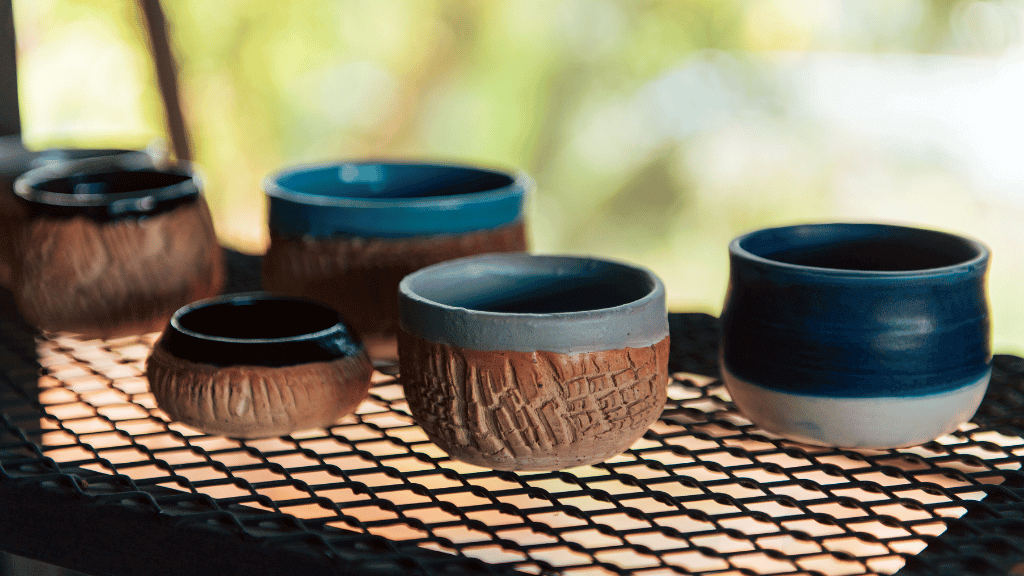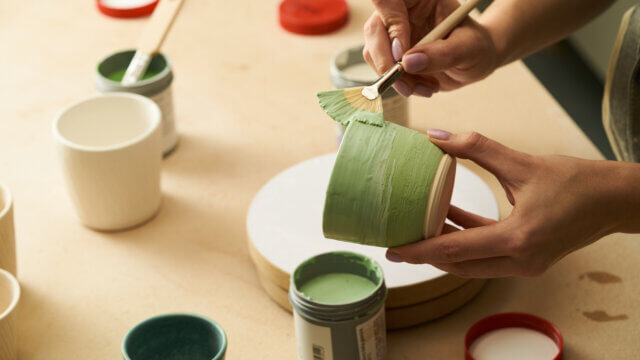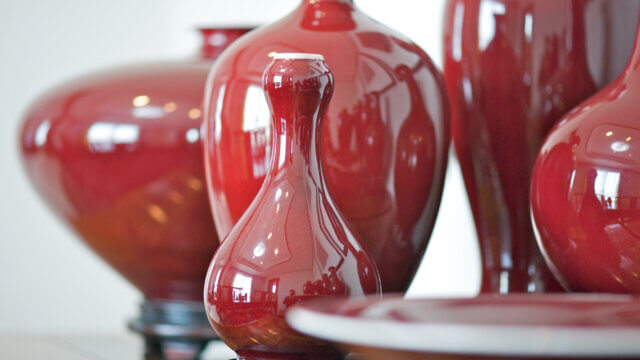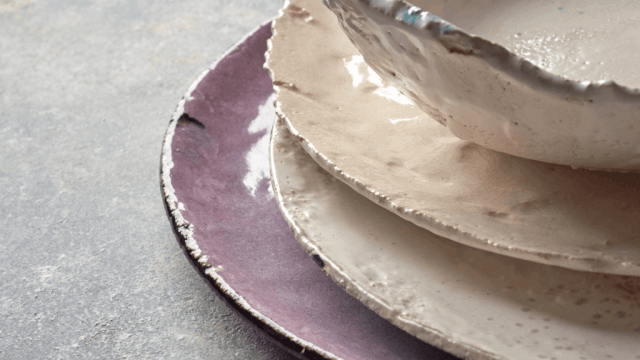Salt-glaze pottery is a type of ceramic created by adding salt to the kiln during the firing process, resulting in a unique, glossy surface texture.
The sodium ions from the salt react with the silica in the clay, forming a sodium-silicate layer on the pottery.
This gives salt-glazed pottery its characteristic orange-peel texture and increased durability.
Introduction to Salt-Glaze Pottery
Salt-glaze pottery is a unique and distinct type of ceramic originating from the 15th century in Germany.
Its surface, resembling orange peel, and its durability made it popular throughout Europe and eventually worldwide.
In this article, we’ll explore the process, history, and features of salt-glaze pottery.
The Salt-Glazing Process
The salt-glazing process involves introducing salt into the kiln at high temperatures during the firing of the pottery.
The salt vaporizes and forms a sodium vapor that reacts with the silica present in the clay body.
Sodium Silicate Formation
This reaction creates a thin layer of sodium silicate on the surface, giving the pottery its signature glossy appearance and texture.
The amount and timing of salt addition, along with the kiln’s temperature and atmosphere, influence the final outcome and appearance of the salt-glazed pottery.
Durability and Functionality
The formation of this glassy sodium silicate layer not only enhances the pottery’s appearance but also increases its durability, making it resistant to chipping and general wear.
Due to its functionality, salt-glaze pottery has been historically used for stoneware and storage vessels such as beer steins, jugs, and jars.
Historical Context and Development
First developed in Germany in the 15th century, salt-glaze pottery quickly gained popularity across Europe due to its functionality and unique aesthetic.
This style of ceramics continued to evolve with regional adaptations and variations on the basic salt-glazing technique.
The Cobalt Blue of Westerwald
One such variation comes from the Westerwald region which introduced the use of cobalt oxide, providing a striking blue color on the gray clay surface.
This cobalt blue decoration is now synonymous with Westerwald salt-glaze pottery.
English Salt-Glaze Stoneware
In the 17th century, English potters adopted salt-glaze techniques for stoneware, distinguishing itself from other European styles through the use of white clay and intricate slip-casting methods.
These innovations led to the popularization of salt-glazed stoneware in England and surrounding areas.
Modern Salt-Glaze Pottery
Today, salt-glaze pottery continues to be appreciated for its unique appearance and historic charm.
While traditional methods and forms are still produced, contemporary artists also experiment with new twists on the technique, exploring different colors, textures, and shapes.
This versatility ensures that salt-glaze pottery remains a timeless art form appreciated by collectors and enthusiasts alike.
Typical Characteristics of Salt-Glaze Pottery
Salt-glaze pottery boasts some particular features that make it immediately recognizable.
Its surface typically exhibits an orange-peel-like texture resulting from the salt-silica reaction during the firing process.
Additionally, the colors on salt-glazed pieces may vary depending on the minerals and materials used.
The most iconic colors associated with salt-glaze pottery include shades of gray, blue, and brown.
Environmental Considerations
As the salt-glazing process relies on fuel-fired kilns, there are some environmental concerns associated with this type of pottery.
The fuel combustion generates air pollution, while the salt used in the glazing process can produce hazardous waste.
However, modern potters are exploring alternative practices that are more environmentally friendly, such as reusing firing waste and implementing cleaner burning kilns.
Collecting and Caring for Salt-Glaze Pottery
Salt-glaze pottery is often sought after by collectors due to its rich history, unique appearance, and timeless appeal.
To care for these pieces, collectors should protect them from direct sunlight to prevent fading, clean them with a soft cloth or gentle brush, and handle them with care to minimize the risk of chipping or cracking.
Functional and Decorative Applications
Historically, salt-glaze pottery was primarily used for functional items, such as jugs, crocks, and storage vessels.
However, over time, its decorative potential has become a prominent feature.
Today, contemporary artists produce a wide range of salt-glazed pottery items, including vases, sculptures, and decorative wall pieces, making it a versatile art form that can be appreciated for both its beauty and functionality.
Frequently Asked Questions about Salt-Glaze Pottery
For those interested in salt-glaze pottery, it’s common to have questions about the process, history, and features of this unique ceramic art.
Here are some frequently asked questions and their direct answers to help you gain a better understanding of salt-glaze pottery.
How is the salt-introducing process carried out during firing?
The salt is introduced to the kiln at high temperatures, between 2167°F (1185°C) and 2372°F (1300°C), in solid form, and is usually thrown or sprinkled onto the ware or kiln shelves.
The heat causes it to vaporize, releasing sodium vapor, which reacts with the silica in the clay to form the sodium silicate surface.
Why does salt-glaze pottery have an orange-peel-like texture?
The texture is a result of the sodium-silicate layer formed during the firing process.
As the sodium from the salt reacts with the silica in the clay, it creates a glaze that produces the distinctive orange-peel appearance unique to salt-glaze pottery.
Is salt-glaze pottery food safe?
Yes, salt-glaze pottery is generally considered food safe due to its durable, impervious surface, which is resistant to chipping, cracks, and liquid absorption.
However, it’s crucial to ensure that only lead-free glazes and materials have been used in its production, as some older or traditional pieces might contain lead.
What is the difference between salt-glaze pottery and other glazed ceramic art?
The primary difference lies in the glazing process.
Salt-glaze pottery utilizes salt introduced during the firing process to create a glaze, whereas other glazed ceramics use a pre-applied glaze before firing.
Furthermore, salt-glaze pottery is characterized by its unique orange-peel texture, setting it apart from other types of glazed ceramics.
How can I identify genuine salt-glaze pottery?
Genuine salt-glaze pottery can be identified by its characteristic appearance: the distinct orange-peel-like texture and a glossy surface created by the sodium-silicate layer.
Additionally, the weight, craftsmanship, and general quality of the pottery can be indicative of its authenticity.
Collectors can also consult experts or books to gain more knowledge about specific potteries or styles related to salt-glaze pottery.











